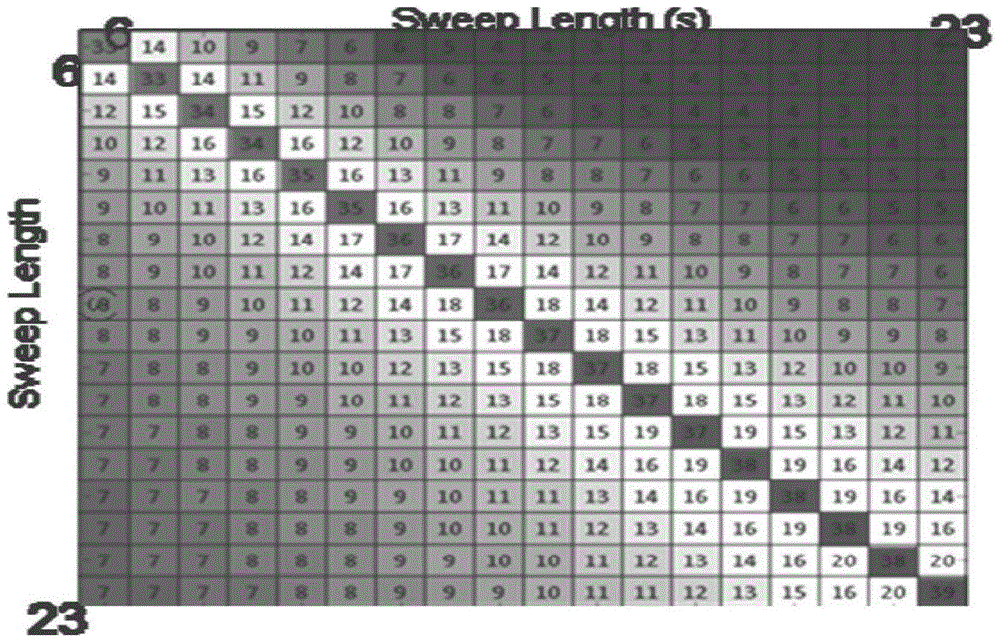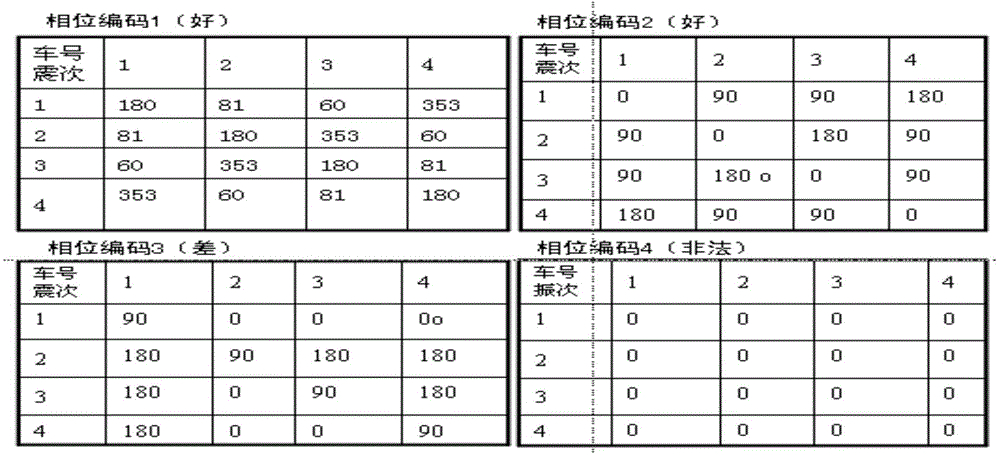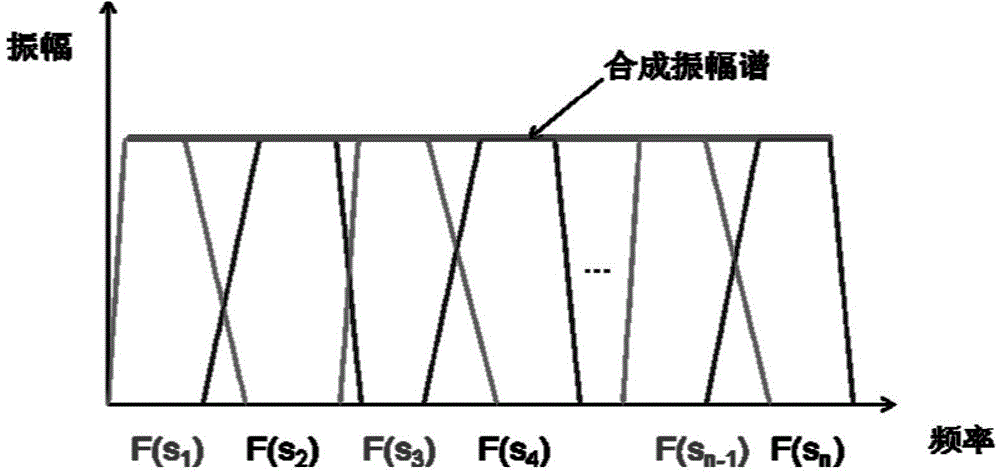Vibroseis frequency division simultaneous excitation method
A source and frequency band technology, applied in the field of vibroseis excitation, can solve the problems of unavailable harmonic interference, seismic signal suppression, and limited production efficiency, so as to reduce impending shot interference and harmonic interference, reduce operating costs, and reduce cost effect
- Summary
- Abstract
- Description
- Claims
- Application Information
AI Technical Summary
Problems solved by technology
Method used
Image
Examples
Embodiment approach 1
[0063] In Embodiment 1), the scanning sub-signals of 6Hz-27Hz and 44Hz-65Hz are frequency bands with no intersection, while the scanning sub-signals of 6Hz-27Hz and 25Hz-46Hz are frequency bands with intersection.
[0064] 3) When the non-interference length required for recording is n seconds, the sub-scanning signal matrix G of non-intersection frequency bands is; G=(S ij ) 2N×2M , where S ij is the scanning sub-signal in row i and column j in the matrix, N is the number of scanning sub-signal rows required to realize the non-coherent recording length of n seconds, and M is the number of simultaneously excited sources;
[0065] Decompose the target scanning signal into at least 2 times N*M sub-scanning signals, so that all sub-scanning signals in the matrix are non-intersecting frequency band sub-scanning signals when M seismic sources are excited at the same time;
[0066] For example: there are 4 simultaneous excitations, and the non-interference length required for reco...
PUM
 Login to View More
Login to View More Abstract
Description
Claims
Application Information
 Login to View More
Login to View More - R&D
- Intellectual Property
- Life Sciences
- Materials
- Tech Scout
- Unparalleled Data Quality
- Higher Quality Content
- 60% Fewer Hallucinations
Browse by: Latest US Patents, China's latest patents, Technical Efficacy Thesaurus, Application Domain, Technology Topic, Popular Technical Reports.
© 2025 PatSnap. All rights reserved.Legal|Privacy policy|Modern Slavery Act Transparency Statement|Sitemap|About US| Contact US: help@patsnap.com



